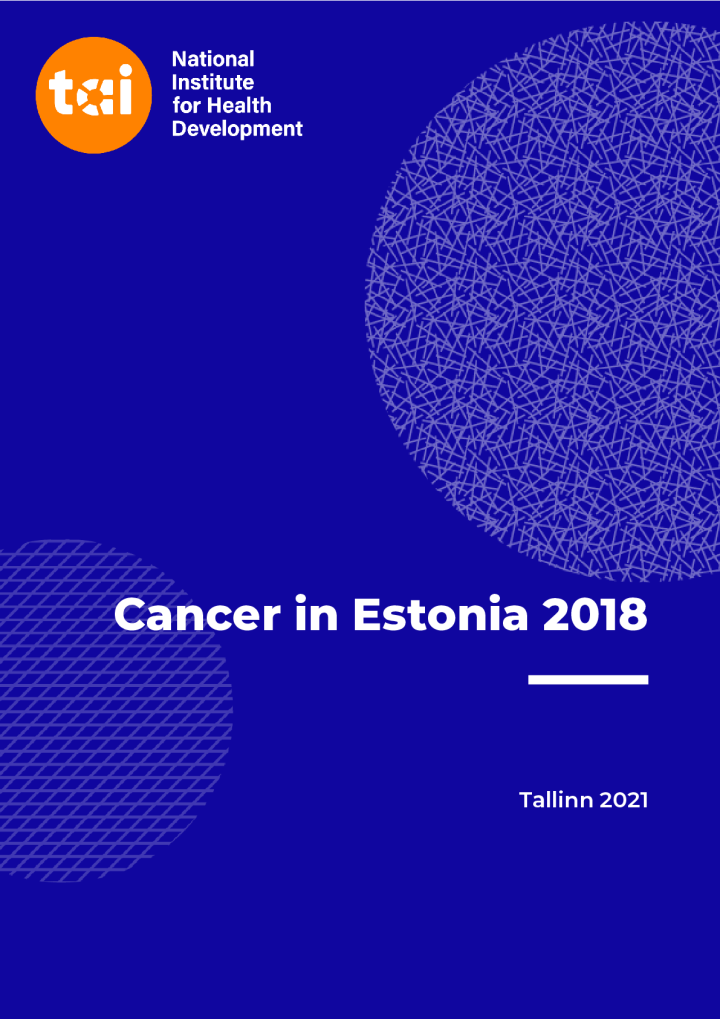Cancer in Estonia 2018
Summary
Estonian cancer incidence data are available for as far back as 1968; over the past 50 years, the annual number of new cancer cases has increased significantly. In 2018, 8783 new cancer cases were registered in Estonia, of which 4462 were diagnosed in men and 4321 in women.
Leading cancer sites in men were the prostate (26% of all cancers in men) and lung (14%). Among women, the leading sites were the breast and non-melanoma skin (both 19% of all cancers in women). The number of new cases as well as the crude and age-standardized incidence rates per 100,000 persons in men and women for tumours reportable to the Estonian Cancer Registry are presented in the Tables of this report.
Around 65% of all malignant tumours were diagnosed in patients older than 65 years. The most frequent cancer sites vary across age groups. In the age group 15-34, the leading cancer sites were the testis and Hodgkin’s lymphoma in men and the cervix and breast in women. In age group 35-54, the most common cancer site was the prostate in men and the breast in women. Among patients aged 55-74 years, as well as those aged 75 or older, the leading sites were the same as in the general population, i.e. prostate and lung in men and breast and non-melanoma skin in women.
In 2018, 40 new cancer cases were diagnosed in the age group 0-14, of which 22 were among boys and 18 among girls. This report gives an overview of childhood cancer incidence during the period 2009-2018. The proportion of microscopically verified cases in 2018 was 90%, while ca 1% of cases were registered on the basis of death certificates only (DCO cases). Half of the new cancer cases diagnosed in 2018 were localized at the time of diagnosis, but ca 20% of patients already had distant metastasis. Specifically, 40% of lung cancer cases and 25% of colorectal cancer cases were diagnosed at stage IV, among both men and women.
From 1968 to 2018, total cancer incidence more than doubled in both men and women. The rate of stomach cancer in both sexes as well as lung cancer in men is decreasing, but the incidence of colon and rectum cancer, skin melanoma and non-Hodgkin’s lymphoma is increasing in both men and women. The previously increasing rates of prostate cancer have recently stabilized. Cervical cancer, which affects younger women in particular, remains an important public health issue in Estonia.
On 31 December 2018, there were 63,939 persons (25,856 men and 38,083 women) in the population of Estonia with a history of cancer.
